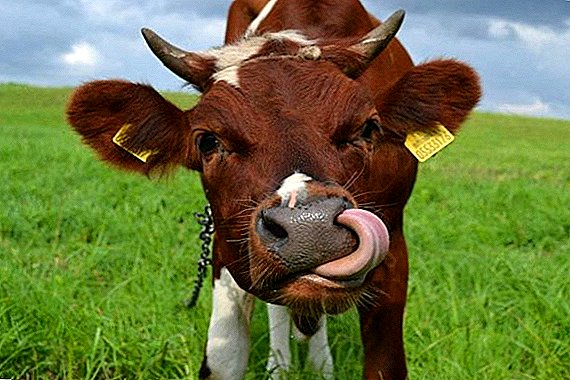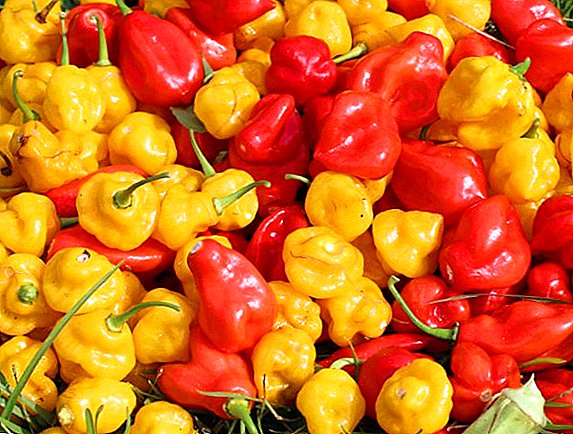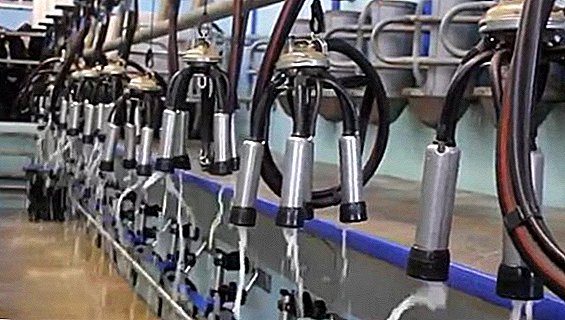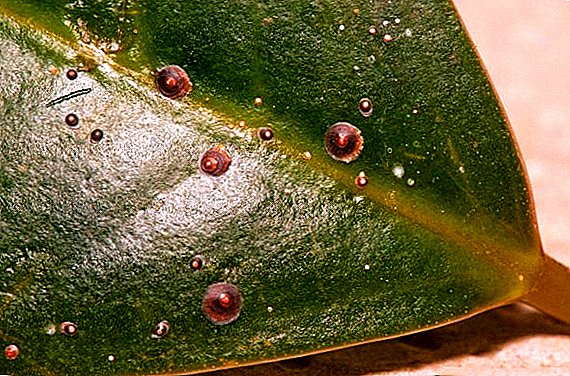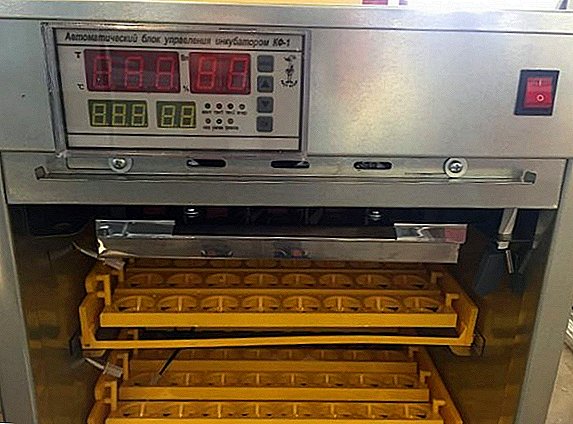 Today, productive, meat-egg, cross breed chickens are gaining increasing popularity. However, their disadvantage is the bad instinct of hatching eggs, because many poultry farmers choose incubators for domestic use in small numbers for breeding birds. One of such devices is the automatic incubator model "AI 264". We will talk about the features of this device, characteristics, rules of work in this article.
Today, productive, meat-egg, cross breed chickens are gaining increasing popularity. However, their disadvantage is the bad instinct of hatching eggs, because many poultry farmers choose incubators for domestic use in small numbers for breeding birds. One of such devices is the automatic incubator model "AI 264". We will talk about the features of this device, characteristics, rules of work in this article.
Description
This model is intended for the cultivation of the main types of agricultural birds (chickens, geese, ducks, turkeys), as well as some wild species of birds (pheasants, guinea fowls, quails). The device is equipped with a convenient system for automatically turning the eggs and maintaining the set parameters. In most cases, the device is used in small subsidiary farms, but sometimes "AI-264" is used on large farms. In this case, use multiple devices. Manufacturing country - China, Jiangxi.  For the manufacture of the case, galvanized sheet metal and insulation with a layer of 5 cm are used, the trays are made of high-quality durable plastic. Both the inner chamber and the plates are easy to clean and disinfect. Due to the tightness inside the incubator, a constant, favorable microclimate is created. If necessary, the plate can be changed. The width of the device allows you to easily carry it through any doorways.
For the manufacture of the case, galvanized sheet metal and insulation with a layer of 5 cm are used, the trays are made of high-quality durable plastic. Both the inner chamber and the plates are easy to clean and disinfect. Due to the tightness inside the incubator, a constant, favorable microclimate is created. If necessary, the plate can be changed. The width of the device allows you to easily carry it through any doorways.
Specifications
Model "AI-264" has the following characteristics:
- dimensions (W * D * H): 51 * 71 * 83.5 cm;
- device weight: 28 kg;
- works from a voltage of 220 V;
- maximum power consumption: 0.25 kW on average, maximum up to 0.9 kW;
- hatchability: up to 98%;
- temperature range: 10 ... 60 ° C;
- humidity range: up to 85%.
Did you know? In incubators, the egg flip is performed automatically for uniform heating. In nature, the hen hen regularly regularly reverses future offspring with a beak. A hen has to sit on eggs almost around the clock, distracted only by food. Eating at the female should occur as quickly as possible, so that the eggs do not have time to cool.
Production characteristics
The incubator is equipped with three shelves on which plastic trays with future offspring are placed. Trays can be universal (mesh) and cellular, that is, separately for chicken, duck, goose and quail eggs. The cells in the trays are made by the type of honeycomb, with this arrangement, the eggs are not in direct contact, which significantly reduces the spread of bacterial and fungal infections.  Trays need to be bought separately, depending on the species of birds, which you are going to display. Trays are easily removed from the camera, if necessary, change to new, wash. Capacity of various types of trays:
Trays need to be bought separately, depending on the species of birds, which you are going to display. Trays are easily removed from the camera, if necessary, change to new, wash. Capacity of various types of trays:
- 88 eggs for chicken eggs Total can accommodate 264 pcs. in the incubator;
- for duck eggs - 63 pcs. In total, 189 pcs can be placed. in the incubator;
- for goose eggs - 32 pcs. Total incubator holds 96 pcs .;
- for quail eggs - 221 pcs. In total, 663 pcs can be placed in the incubator.
Read about the intricacies of incubating eggs of chickens, goslings, poults, ducks, turkeys, quails.
Incubator Functionality
The model incubator "AI-264" has a fully automated control system, which is performed through a microprocessor unit. On it, you can set the required temperature and humidity, the speed and intervals of the flip of trays, temperature indicators for switching on the main and additional heating elements. You can also calibrate the temperature and humidity, specify the fan running time for cooling, or the humidity range for turning on the evaporator.
Important! When the temperature or humidity is outside the specified range, the device gives an alarm.
If necessary, it is possible to throw off all the settings and return the standard parameters set at the factory. In manual mode, you can turn off the turning of eggs, perform a forced turn forward / backward. The device is equipped with main and additional heating elements, a ventilation system of 5 fans connected in parallel (if one breaks down, the other fans stabilize the microclimate without interrupting the operation of the incubator), a special valve for air circulation.  You can install an automatic water supply in the bath with an evaporator by connecting a water tank or a centralized water supply.
You can install an automatic water supply in the bath with an evaporator by connecting a water tank or a centralized water supply.
Advantages and disadvantages
Among the advantages of this model:
- small energy consumption, the ability to use in the household without the high cost of electricity;
- relatively small size;
- the ability to automatically maintain the microclimate;
- ease of use, cleaning and disinfection.
More information about such incubators: Blitz, Universal-55, Layer, Cinderella, Stimulus-1000, Remil 550CD, Ryabushka 130, Egger 264, Ideal hen .
Instructions for the use of equipment
Working with the device is quite simple. In general, the stages of growing eggs in this model are not much different from growing birds in incubators of other species.
Preparing the incubator for work
- Before incubating, the device must be thoroughly cleaned from debris, then treated with any disinfectant ("Ecocide", "Decontente", "Glutex", "Bromosept", etc.).
- With the help of the fabric, the inner surface of the chamber, the egg trays, the area near the fans and the heater should be treated. Do not touch the heating elements, sensors, electrical components and the engine.
- Next, in the water tank you need to pour liquid (30-40 ° C heat) or connect the water supply with a hose from a separate container.
- Also, the incubator must be heated and set the desired parameters of humidity and temperature.

Egg laying
When laying eggs, follow these rules:
- Prior to incubation, the selected eggs should be stored at about 15 ° C. They can not be immediately placed in an incubator, because of the strong temperature difference, condensate can form, which will lead to fungal infection and the death of eggs.
- Within 10-12 hours, the eggs must be kept at a temperature of 25 ° C and only after comparing the temperature inside and outside the shell to place the device.
- There is no difference how to place chicken eggs horizontally or vertically. Production of larger birds is desirable to place a blunt end up or horizontally.
- Eggs should be approximately the same size and weight, without any defects of the shell, pollution.
- Regarding the washing of eggs before incubation, the views of poultry farmers diverge, so if you doubt, you can omit this procedure (provided that the shell is not contaminated).
Important! You can not incubate eggs of different species of birds together. They have different ripening terms and different needs, respectively, it will be impossible to provide all the necessary conditions.
Incubation
The incubation period itself consists of several stages, at each of which it is necessary to set appropriate indicators. The exact parameters at the four stages of incubation can be studied in the table below:
| Period | Dates (days) | Temperature | Humidity | Coups | Ventilation |
| 1 | 1-7 | 37.8 ° C | 50-55% | 4 times / day | - |
| 2 | 8-14 | 37.8 ° C | 45% | 6 times / day | 2 times / day. 20 minutes each |
| 3 | 15-18 | 37.8 ° C | 50% | 4-6 times a day. | 2 times / day. 20 minutes each |
| 4 | 19-21 | 37.5 ° C | 65% | - | - |
 At the last stage of incubation, it is necessary to open the incubator door as rarely as possible so as not to cause fluctuations in humidity and temperature. At this stage, the stability of these indicators is especially important, and the survival of offspring will depend on them. The last stage is one of the most responsible.
At the last stage of incubation, it is necessary to open the incubator door as rarely as possible so as not to cause fluctuations in humidity and temperature. At this stage, the stability of these indicators is especially important, and the survival of offspring will depend on them. The last stage is one of the most responsible.
Hatching chicks
Beginning from 19-21 days nestling will occur. If all the incubation rules are followed, the hatching will be approximately uniform, the chicks will be born one by one within 12-48 hours. There is no need to interfere with the hatching process and in every way “help” the chicks to leave the shell. After 25 days, eggs can be disposed of, as hatching is unlikely. After birth, let the chicks dry out and adapt in the incubator for 12 hours, then transplant into a brooder or box for keeping babies. 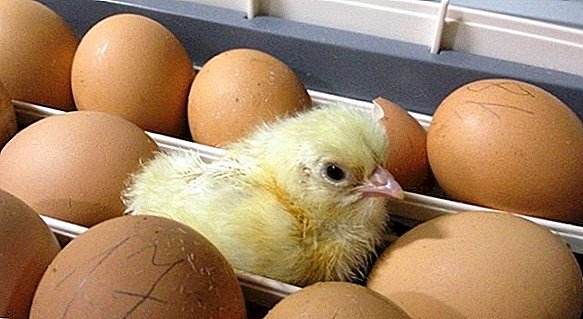
Device price
Different suppliers have different prices for the device within a few thousand rubles. In general, the average cost of an AI-264 incubator is 27-30 thousand rubles. To this amount you should add the price of at least three trays of the same type, each of which costs 350-500 rubles. If you are going to grow more than one species of agricultural birds, you will have to spend several thousand more rubles to buy trays of a different type. In UAH and USD, the cost of an incubator is approximately 14,000 UAH and 530 dollars, respectively.
Did you know? It has long been proven that birds are direct descendants of dinosaurs. However, it is the chickens that have the least amount of chromosomal changes relative to the disappeared ancestor. This is the conclusion reached by researchers at the University of Kent.
findings
In general, an AI-264 model incubator is an acceptable choice for small farms and larger chicken farms. This poultry incubator has good technical characteristics, compact size, but its price may seem rather high.


